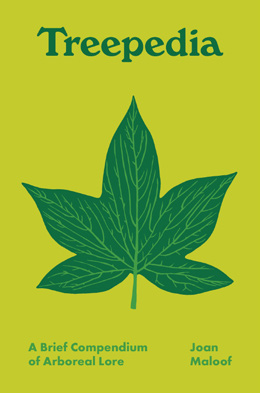From Living Woods issue 61
ANTONY MASON dips into an enjoyable pocket-sized encyclopedia of trees and tree-lore. It’s a handy guide, and as a bonus, is printed on recycled, wood-free paper

TREEPEDIA
A Brief Compendium of Arboreal Lore
JOAN MALOOF
Princeton University Press
Hardback
152 pages
RRP £9.99
ISBN 9780691208756
It may come as a surprise to find something called a ‘–pedia’ is actually a short, small-format book – more like a stocking-filler than an encyclopaedia. Also, the subtitle ‘A Brief Compendium of Arboreal Lore’ would surely make readers – at least UK ones – think of traditional perceptions of trees: myth, old practices and ideas, ‘folklore’ etc.
In fact, Treepedia is more like a rather random selection of moderate-length encyclopaedia entries about trees, tree terminology, and leaders and activists in the field. And largely American ones at that.
That said, it is a neat little book, enlivened by occasional black-and-white drawings. Joan Maloof is a professor of biology and environmental studies at Salisbury University, Maryland, and an experienced ‘tree-writer’, author of such works as Teaching the Trees: Lessons from the Forest and Among the Ancients: Adventures in the Eastern Old-Growth Forests. She has a clear, approachable style and an engaging sense of curiosity.
British readers may find the American orientation a bit relentless. The first four entries, for example, are Adirondacks; American Chestnut; Appleseed, Johnny (a US historical character); and Arbor Day. The brief biographies are almost all about Americans. And the tree selection leans heavily towards the Americas. In among these, however, are a fair number of entries from around the world: Baobab; the old-growth Białowieża Forest of Poland/Belarus; Wangari Maathai, who started the Green Belt Movement in Africa… Yes, as mentioned, it is a rather random and personal selection.
But that is a large part of Treepedia’s charm, and dipping into it brings plenty of rewards. The curious chance-creation of the wretched Leyland cypress, for instance, promoted by British nurserymen from 1926 with literally fatal consequences. The astonishing age of some baobab trees, one reaching 2,450 years. How leaf scars can be used for tree identification. Tupelo honey, from the nectar of black gum trees.
Isn’t that just the kind of thing you want from a stocking filler?